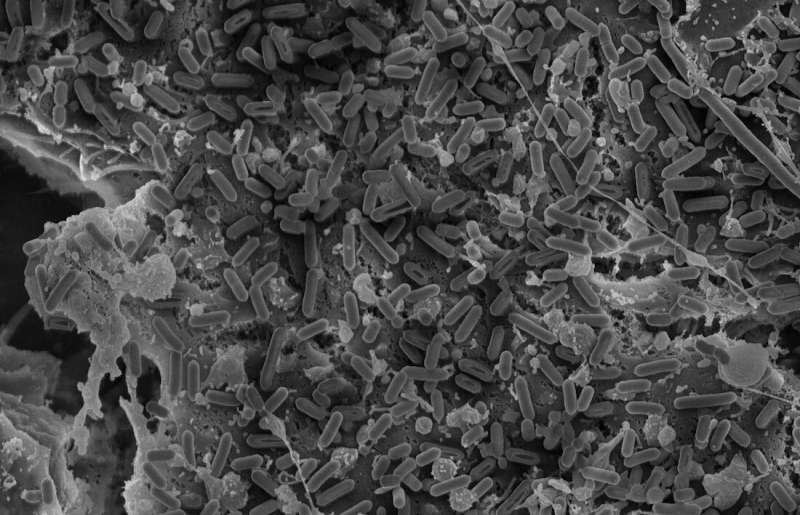Researchers study different strains of Listeria in pigs

Researchers from the CEU Cardenal Herrera University (CEU UCH) of Valencia, the University of Cordoba and the Pasteur Institute of Paris have conducted a study to determine the virulent potential of strains of the listeria monocytogenes bacteria in pigs in Spain. These animals are asymptomatic reservoirs for this bacteria, which both in humans as well as animals causes the disease known as listeriosis, an infection that is increasing in cases in the EU since 2008. "The current health safety controls prevent the consumption of products that could be contaminated, but finding the virulent strains we have detected in these animals will improve the control and monitoring of the bacteria," says Juan José Quereda, lecturer and researcher at the CEU UCH, who has headed the study.
The team of researchers from the CEU UCH, the University of Cordoba and the Pasteur Institute has analyzed a total 23 different isolated strains of Listeria monocytogenes from a previous study from a total 750 samples of pig tonsils, skin and meat. The study analyzed the virulence factors of these strains. In other words, their capacity to multiply and cause the disease with more or less ease. "These findings are of great importance both for veterinary medicine as well as food security," says lecturer Quereda.
Virulence and severity factors of the infection
The interest in studying the bacteria in pigs in Spain emerged following the severe case of infection that affected over 200 people in August 2019 derived from the consumption of shredded pig meat. Analyzing the virulence factors of Listeria monocytogenes and its intracellular invasion and replication in these animals is useful to understand the severity of the infection they can cause and to improve the controls of the presence of the bacteria in products destined for human consumption.
The results of the study, published in Veterinary Record, show that the isolated meet strains have shown less virulence and invasiveness than those found in pig tonsils. "Given that the current food safety legislation strictly limits the amount of listeria in food, this finding of the most virulent strains in pigs is not a risk for the consumption of swine products, but an important step forward in the knowledge of the bacteria and its infection mechanisms." Furthermore, as lecturer Quereda also points out, "even though L. monocytogenes can be found in a large variety of foods, cooking them at temperatures over 65ºC destroys the bacteria. Therefore, the risk is in foods that are ready for consumption, meaning those that are not cooked before being consumed."
More information: Jaime Gómez-Laguna et al. Virulence potential of Listeria monocytogenes strains recovered from pigs in Spain, Veterinary Record (2020). DOI: 10.1136/vr.105945
Journal information: Veterinary Record
Provided by Asociacion RUVID



















